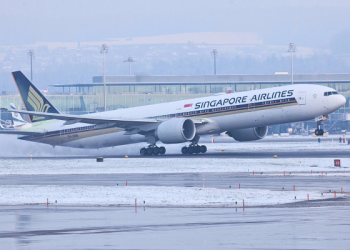The German aviation industry has been navigating turbulent skies for the past decade, facing a significant decline in seat capacity to and from its airports. The impact of this decline, exacerbated by the recent global pandemic and other geopolitical factors, paints a challenging picture for the once-thriving sector.
Domestic seat capacity takes a hit
![German aviation industry seat capacity [Photo Credit: WIRED]](https://autojournal.africa/wp-content/uploads/2023/08/German-aviation-industry-Photo-Credit-WIRED.jpg)
However, what truly captures attention is the staggering drop in domestic seat capacity, which is expected to be nearly 50% lower than it was four years ago. This sharp decline raises concerns about the overall health of the German aviation market.
Signs of international recovery
Despite the domestic challenges, there are glimmers of hope on the international front. Lufthansa, the country’s flagship carrier, has been observing an increased demand for international travel. This resurgence in demand has prompted Lufthansa to reintroduce its super-jumbo Airbus A380s on key international routes.
After a hiatus of more than three years, the A380 services have been reinstated for destinations like Boston and New York JFK from Munich, with plans to extend the services to Los Angeles and Bangkok in the upcoming winter season.
Nevertheless, even with the boost in international capacity, the total international seats remain down by almost 16% compared to pre-pandemic levels. This highlights the industry’s uphill battle to fully recover and reclaim its former vitality.
Multiple factors at play
The decline in available seats is not solely attributed to one factor; rather, it’s a combination of several challenges. The shift towards remote work and virtual meetings in the post-pandemic era has dealt a blow to sectors heavily reliant on corporate travel, which was a significant source of business for the German aviation market.
Moreover, the void left by the suspension of Air Berlin services in 2017 has been keenly felt. Once the second-largest German carrier and a major player in the domestic market, Air Berlin’s insolvency led to the termination of numerous domestic seats and the abandonment of key routes. Although Lufthansa stepped in by acquiring some of Air Berlin’s assets, a noticeable gap in domestic seat capacity remains.
Geopolitical troubles take a toll
The geopolitical landscape has further complicated matters. Russia’s forcible incursion into Ukraine prompted Lufthansa to halt services to and from the two countries. This decision was echoed by Russian and Ukrainian airlines as well, leading to reduced capacities. Prior to the conflict, Russia held a prominent position as Germany’s 13th largest country by seats, showcasing the extent of the disruption caused by ongoing tensions.
As Germany seeks to navigate through these challenges, the aviation industry’s journey to regain its former heights involves addressing domestic, international, and geopolitical obstacles. Only time will tell if the skies will clear and the German aviation sector will soar once again.




![German aviation industry [Photo Credit Reuters]](https://autojournal.africa/wp-content/uploads/2023/08/German-aviation-industry-Photo-Credit-Reuters.jpg)
![An Airbus A320neo takes off for its first test flight [File AP]](https://autojournal.africa/wp-content/uploads/2025/12/An-Airbus-A320neo-takes-off-for-its-first-test-flight-File-AP-350x250.png)

![regional air travel in UK [Source Manufacturing Outlook]](https://autojournal.africa/wp-content/uploads/2025/11/regional-air-travel-in-UK-Source-Manufacturing-Outlook-350x250.png)
![Blue Island airlines [Source The Independent]](https://autojournal.africa/wp-content/uploads/2025/11/Blue-Island-airlines-Source-The-Independent-350x250.png)

![Air crashes in 2025 [source The New York Times]](https://autojournal.africa/wp-content/uploads/2025/11/air-crashes-in-2025-source-The-New-York-Times-350x250.png)
![Maui wildfire [Photo Credit Google]](https://autojournal.africa/wp-content/uploads/2023/08/Maui-wildfire-Photo-Credit-Google-1-75x75.jpg)









